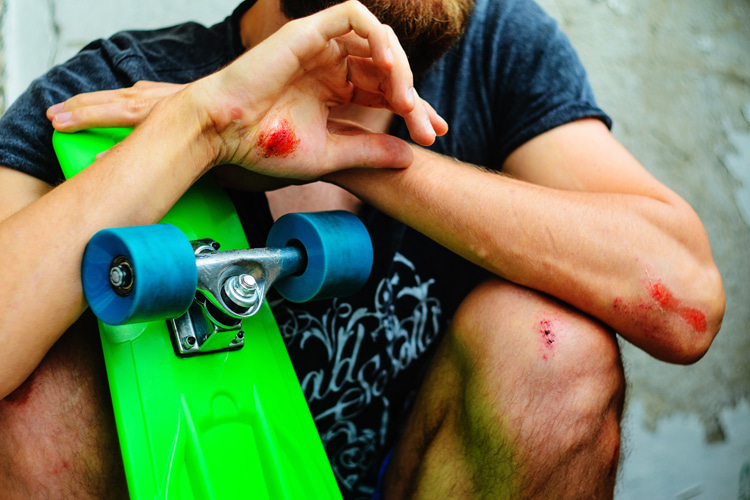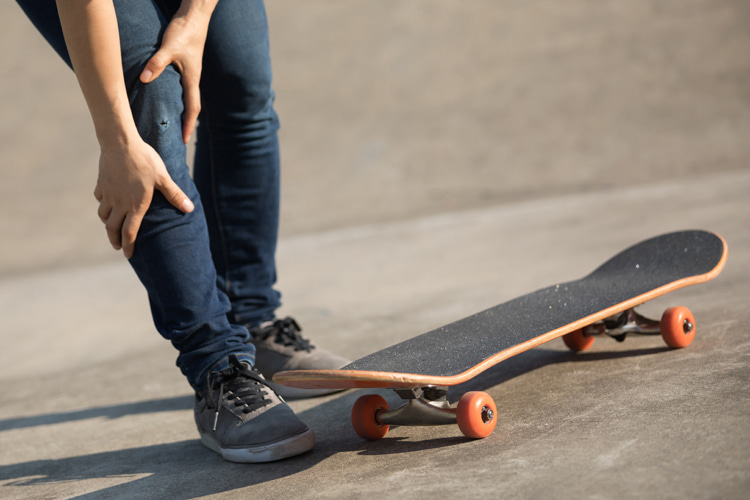Every skateboarder falls, and learning how to fall comes with practice. Here are a few tips on how to do it without getting seriously injured.
Falling off a skateboard is inevitable, and it happens all the time. It's part of skateboarding and applies to all riding levels.
Wiping out doesn't mean you're not meant to skate, and it is also not a sign of underperformance. It's just part of the sport.
Whether you're still pushing off on the skateboard, finding the balance, or trying to land an elaborate trick or maneuver for the 100th time, falls will always occur.
In fact, they're a sign that you're challenging yourself and progressing.
The more we push ourselves to learn new tricks, the more often we will fall and hit the concrete.
Of course, no one wants to get hurt, fracture a bone, or feel pain. But the fear of getting injured shouldn't hinder anyone from progressing in skateboarding.
The trick is to learn to fall correctly and safely to minimize potential visits to the hospital and surgeries.
"Being aware of when a fall is likely to occur before it occurs comes with experience," underline Per Welinder and Peter Whitley, authors of "Mastering Skateboarding."
"This is why most skateboarding-related injuries happen to people within their first few tries at skating."
"They haven't learned yet to recognize the signs of a fall or figured out what to do to get off the skateboard without injury."
The majority of skaters who suffered severe injuries will say they don't know how it happened.
So, because skate accidents happen all the time, the only thing that is actually possible is preventing or mitigating their consequences.

Falling Off 101
When a skateboarder falls, the natural instinct is to throw their hands out to protect himself.
Beginner skateboarders do it a lot. This basic protection move will probably work if you aren't very high off the ground or moving slowly.
However, in most cases, landing on your hands is not a wise option because it could easily result in broken wrists.
So, how should you fall off a skateboard without breaking bones and bleeding?
The best way to fall typically involves rolling or tumbling.
It's similar to what gymnasts do when they run across a mat, jump high into the air, and roll out of it.
To perform a controlled fall, the skateboarder should start practicing in a place where concrete meets grass. Here's how to do it:
- Push once or twice toward the grass;
- When you hit the green field, the board will slow or stop;
- Let yourself fall forward and tuck your lead shoulder downward as if you were doing a somersault;
There you go. Practice it at least 50 times until you fine-tune the move.
You can also grab the ground and push away without trying to stop your momentum and motion.
Gradually, you'll gain and improve muscle memory, and your body will learn to cushion the impact with your forearm and shoulder every time you're about to fall.
Instinctively, you will roll out the best you can, sweeping away from the impact in a fetal position to protect your head and back.
"The reality is that you will usually fall when you're not paying attention, and this is when you are most likely to fall incorrectly," add Welinder and Whitley.
"If you practice falling well even on small spills, you will develop good habits that will be even more useful when you need to rely on instinct."
Skateboard Protective Gear
The worst thing that can happen to a skater is to fall backward because your head can hit the ground and cause permanent brain damage, paralysis, or even sudden death.
Helmets are an extremely useful piece of protective gear for both first-timers and advanced skateboarders.
They not only prevent cracking your head on the concrete but also save lives.
Wearing a helmet while skateboarding isn't something you should be ashamed of. In fact, it's a sign of intelligence.
The most common injury among beginner skaters is sprained wrists, and it often occurs when they're not riding with protection.
So, in the early learning stages, wrist guards can be a smart investment.
Knee pads could also be useful, and they're actually a fundamental piece of protection for vert skaters.
There are also elbow pads for riders with preexisting elbow injuries and gloves, a must-have device for downhill longboarding.
